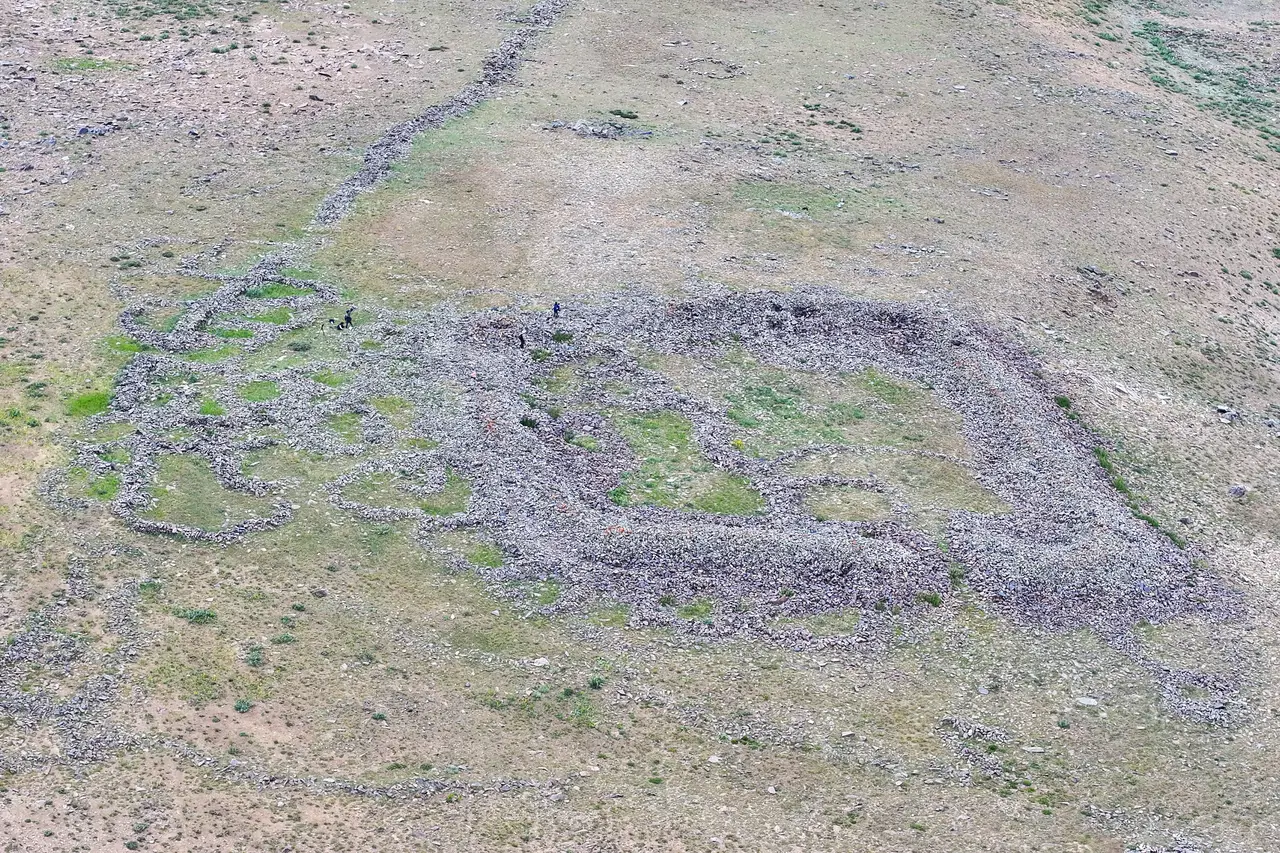50-room castle ruins discovered in Van

The excavation team, headed by Prof. Dr. Rafet Çavuşoğlu, Head of the Archaeology Department of the Faculty of Letters at Van Yüzüncü Yıl University (YYU), has initiated work to unearth historical structures in the district and open them to tourism.
Within the scope of the Archaeological Surface Research Project carried out with the support of the General Directorate of Cultural Heritage and Museums of the Ministry of Culture and Tourism, the team went to the Beşbudak Neighborhood, 62 kilometers from the district, and climbed the Tirişin Plateau at an altitude of 3,000 meters.
Reaching the plateau after a two-hour climb, a team of 12 archaeologists, anthropologists and art historians discovered castle and city wall ruins during surface surveys in the region.
Ceramic fragments, millstones and stones with various markings were found in the ruins of a castle with approximately 50 rooms made of basalt stone and a 4-kilometer-long city wall.

The castle and city wall ruins, thought to have been built in the Iron Age, were determined to have been used extensively in the Middle Ages as a result of the examination of the findings obtained in the region.
Çavuşoğlu, who also served as the chairman of the Van Cultural Heritage Preservation Regional Board, recorded the coordinates of the region, historical ruins, architectural structure and location by photographing them with a drone in order to register and record the castle and city wall ruins in the inventory.
"IT IS IMPORTANT TO HAVE NEARLY 50 SPACES AND LIVING AREAS"Prof. Dr. Çavuşoğlu told an AA correspondent that the Tirişin Plateau, which has important pastures and water resources, has hosted many civilizations that engaged in small livestock farming throughout history.
Çavuşoğlu, noting that the highland tradition still continues in the region, said, "What surprised us about our location is the presence of a castle surrounded by long walls. Inside the castle is an inner castle. The presence of rock paintings here indicates that it dates back to the Mesolithic and Neolithic periods. There is also evidence that this settlement was used in later periods, particularly until the Iron Age, as well as the Middle Ages and beyond."
Çavuşoğlu emphasized that they were surprised to encounter the ruins of a castle with 4-kilometer-long walls at an altitude of 3,000 meters, and noted the following:
The presence of the inner castle, located in the northwestern part of the city walls, practically serves as an administrative center. The images we captured with a drone reveal nearly 50 rooms and living spaces, which is also significant for us. The walls are crucial for ensuring the safety of the people who settled here and the comfortable grazing of their animals. We see that basalt, a natural stone found in the region, was used in the walls. They were deliberately placed in their natural state. There is a section in the area where basalt stones were broken into a furnace. We also identified round structures that we could call kurgans.
Beşbudak Neighborhood Headman Mehmet Ceylan said, "This is an important place inherited from our ancestors. There's a peaceful atmosphere now. Everyone can easily come here and spend their time as they wish. We want these historical remains to be recorded and promoted. We find the work being done in this regard very valuable."
Cumhuriyet





